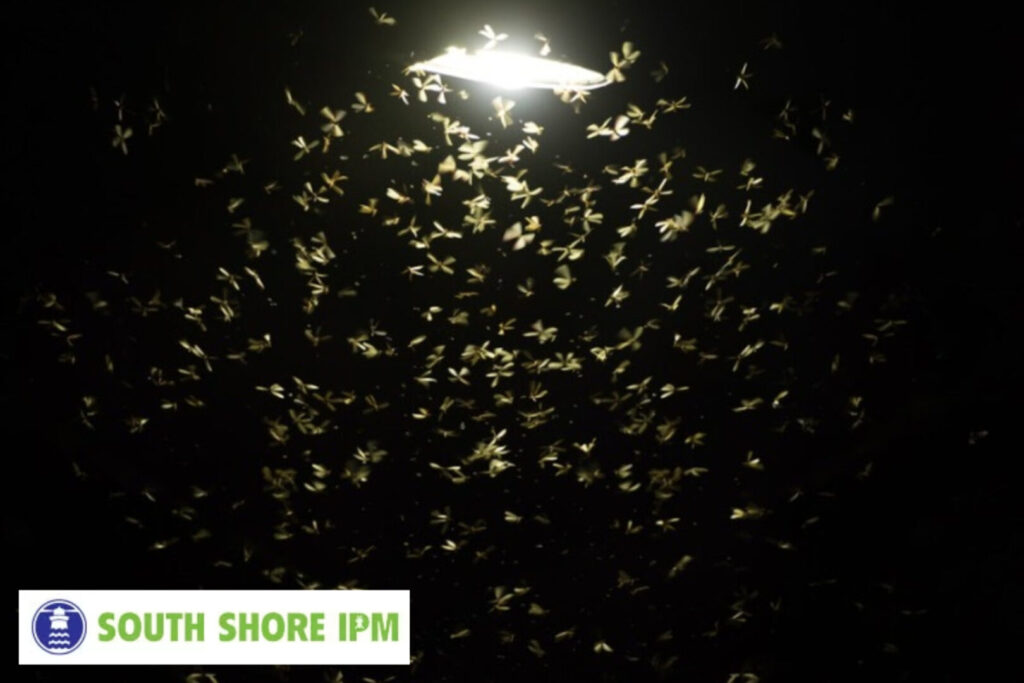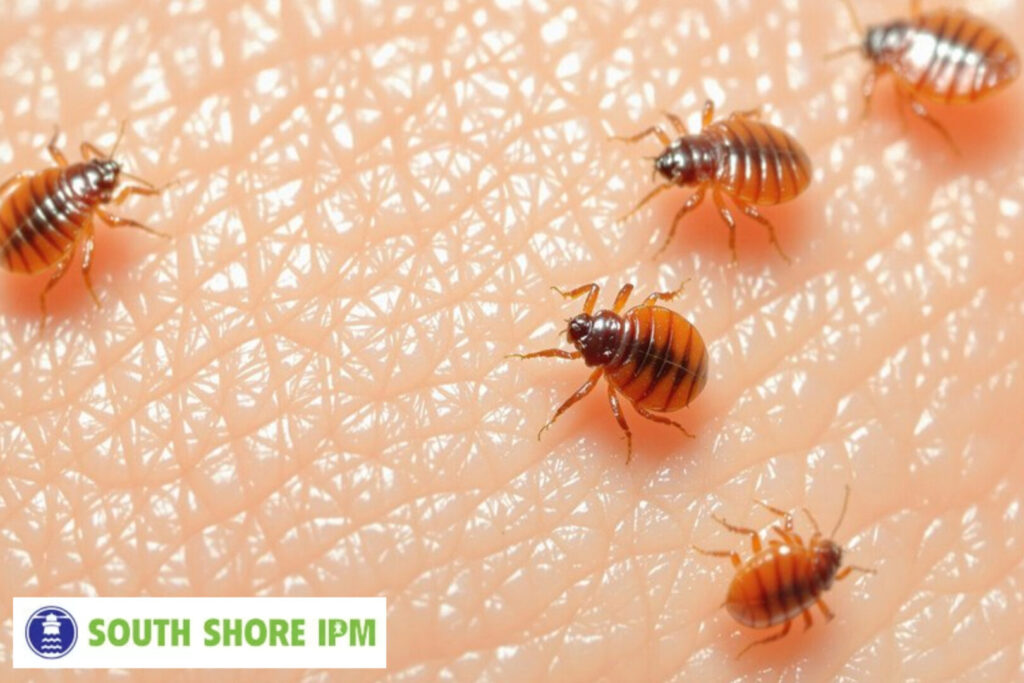Choosing the Right Bug Light for Your Home: What You Need to Know
As the warmer months roll in, so do the bugs. Homeowners in Kingston, MA, often turn to bug light solutions to help keep flying insects at bay, especially around outdoor patios, decks, and doorways. But not all bug lights are created equal, and selecting the right one can make a significant difference in both comfort and pest control effectiveness.
In this blog post, we’ll explore how bug lights work, the different types available, and what to consider before buying one. Whether you’re dealing with mosquitoes, moths, or tiny black bugs in your home, this guide will help you make an informed choice to protect your home and your peace of mind. For a comprehensive approach to pest control, consider scheduling a pest inspection Kingston MA to identify and address potential pest issues beyond just flying insects.
What is a Bug Light?
A bug light is a special type of light bulb designed to reduce the attraction of insects to light sources. Unlike regular incandescent bulbs, which emit broad-spectrum white light that draws in a wide variety of bugs, bug lights typically emit a specific spectrum of yellow or amber light. This spectrum is less appealing to many flying insects, including mosquitoes, moths, and other pests that are attracted to traditional light sources.
While bug lights don’t eliminate pests, they play a significant role in reducing insect activity around outdoor areas, making your home more comfortable during those warmer months. They are often used in combination with other pest control methods to help keep your property pest-free.
How Do Bug Lights Work?
Contrary to common belief, most bug light options don’t “zap” insects because they’re attracted to light. Instead, they utilize a specific spectrum of ultraviolet (UV) light that many flying insects find irresistible. Once drawn in, bugs are either trapped using sticky surfaces or eliminated with electric grids.
Bug lights are most effective against phototactic insects, which are attracted to light, such as moths, flies, and beetles. However, many biting pests, such as mosquitoes, are less attracted to light and more drawn to heat and carbon dioxide. That’s why pairing your bug light with other targeted pest control strategies in Kingston, MA, is important.
Types of Bug Lights: Which Is Right for You?
Choosing the right type of bug light largely depends on your needs and the intended use. Here are the most common options:
1. LED Bug Lights
These lights emit a yellow or amber glow, which is less attractive to insects compared to traditional white light. LED bug lights don’t attract bugs; they help reduce insect presence by not luring them in the first place. These are great for porch lights, patios, or indoor spaces.
2. Zapper Lights
Zappers use UV light to attract bugs and eliminate them with an electric grid. These are ideal for areas with heavy fly or moth activity. However, zappers are not highly effective against mosquitoes or tiny black bugs in houses that are not light-attracted.
3. Bug Traps with UV Light
These devices use UV light to lure insects and then trap them using adhesives. They’re a more passive option and are particularly useful indoors, where electric zapping may be disruptive.
4. Solar-Powered Bug Lights
Perfect for outdoor use, these bug lights harness solar energy during the day and activate at dusk. They’re eco-friendly and low-maintenance, but may not be as powerful as plug-in units.
Key Factors to Consider Before Buying a Bug Light
Location of Use
Where you intend to use the bug light indoors, on a patio, or in the garden will influence your choice. For example, electric zappers are better suited for outdoor spaces due to the noise they generate and the cleanup they require.
Target Insect Type
Understand which pests you’re targeting. If your primary concern is spiders and crickets, a bug zapper might not be your best bet. Instead, use bug lights in conjunction with effective pest control solutions specifically designed for those pests.
Safety Concerns
If you have young children or pets, consider enclosed or low-voltage units to avoid accidental contact. LED options are safest for indoor environments.
Coverage Area
Ensure the light’s effective coverage area is checked. Some devices are designed for small rooms, while others are suitable for large patios or backyards.
Power Source
Some bug lights plug into wall outlets, while others are battery-powered or solar-charged. Select one that matches the power availability in the space where you plan to use it.
Bug Lights vs. Professional Pest Control
Bug lights are a helpful supplementary tool in your fight against insects, but they are not a standalone solution. Many pests, such as ants, termites, and rodents, are unaffected by light. If you’re seeing persistent pest activity even with a bug light, it may be time to bring in a professional.
For example, homeowners in Kingston, MA, often face seasonal surges in mosquito and ant populations. While a bug light can reduce flying insects around your porch, it won’t treat breeding grounds or nesting sites. That’s where partnering with a trusted pest control Kingston MA provider, like South Shore IPM, makes all the difference.
A combination of physical barriers, green and safe pesticides, and expert monitoring is often necessary to keep your home truly pest-free.
Tips for Using Bug Lights Effectively
- Placement Matters: Install bug lights away from areas where people gather, as the light can actually attract bugs before zapping them. Place them at least 15-20 feet from your main outdoor sitting areas.
- Height and Coverage: Mount bug zappers 5 to 7 feet above the ground for maximum effectiveness. Bugs naturally fly at this height, especially near light sources.
- Maintenance Is Key: Regularly clean the unit to remove dead insects and debris. A clogged electric grid or sticky trap won’t work efficiently and may attract more pests due to the smell.
- Avoid Competing Lights: Turn off nearby lights that may reduce the bug light’s lure effectiveness. A single, well-placed light is often more effective than multiple competing sources.

When to Seek Professional Help
If you’ve tried multiple DIY solutions and still struggle with recurring pest issues, whether it’s tiny black bugs in the house, spiders, or mosquitoes, don’t wait until the infestation gets worse. Many bugs breed quickly and can hide in cracks, walls, and unseen areas of your home.
Calling in a professional exterminator Kingston MA service ensures that the root cause is addressed with a comprehensive plan. Experts can also recommend long-term measures to make your home less attractive to pests, such as sealing entry points and removing nesting materials.
About South Shore IPM
At South Shore IPM, we’re dedicated to creating pest-free environments for families and businesses throughout Kingston, MA, and the surrounding areas. Our team of pest management professionals is skilled in identifying, targeting, and preventing a wide range of pests, including ants, termites, mosquitoes, rodents, and more.
We offer eco-conscious, customized treatment plans that focus on protecting your home and health without compromising safety. Our service packages include Bi-Monthly, Quarterly, and Semi-Annual options, along with specialized packages for mosquito, rodent, and organic control.
South Shore IPM is proud to serve the community of Kingston, MA, with flexible scheduling, emergency service, and a commitment to quality and care. As a trusted exterminator, we also offer valuable discounts for military personnel, senior citizens, teachers, and first responders.
Contact us today to schedule your pest inspection and ensure your home is protected from unwanted pests year-round.




